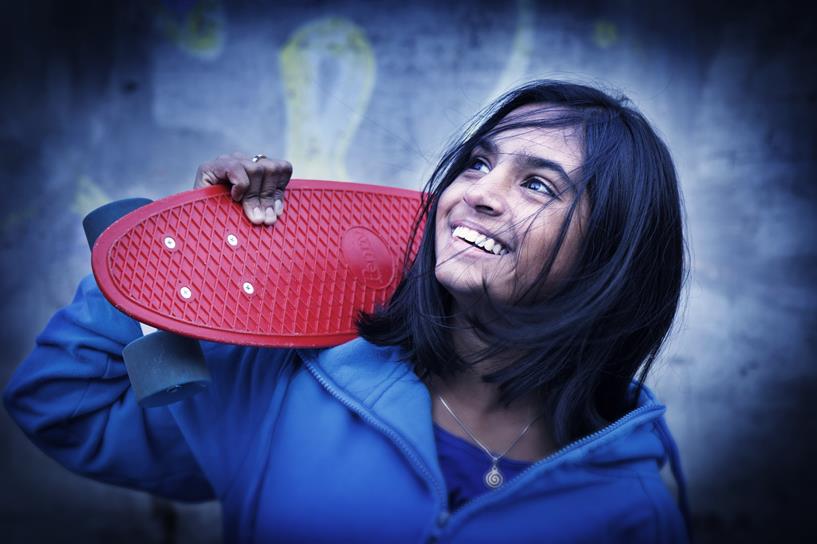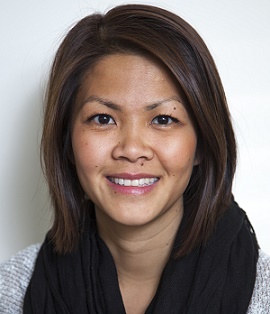A good neighbour project – creates well-being and activities for newly arrived children and their families
Save the Children Norway has recruited volunteers to take part in activities together with newly settled refugee families. The volunteers and the families find fun activities to do together such as going for walks or spending time at the playground.
Challenge
Many families may find it challenging to initiate first contact with a sports club or other recreational institution because they do not know what is available in their municipality and because language is a major barrier when you are a newcomer in Norway. Therefore, many children stay at home instead of taking part in activities with other children.
Initiative
IMDi provides funding to Save the Children Norway’s A good neighbour project so that children who have recently settled in a municipality are encouraged to find an activity and get to know other children.
Result
Through participation in the activities, the children meet their peers, form networks, make friends and gain a sense of belonging.
Through the A good neighbour project and visits from the volunteers, newly settled families feel that they know someone, have someone to talk to and who can answer the many questions they might have as newcomers to Norway and the local community. This helps the parents and their children to expand their networks.

Objective and target group
The objective is to encourage children who arrive in Norway to participate in organised recreational activities, make friends with other children and experience joy, friendship and a sense of belonging.
The target group is newly arrived children and their families.
About the initiative
The families who participate in the A good neighbour project are recruited via the introduction programme. The employees in Save the Children Norway and the municipality emphasise the value of this cooperation in disseminating information to the relevant families.
The A good neighbour project, which has a special focus on children, is an important supplement to the municipality’s introduction programme that primarily targets adults. The volunteers work in teams of 2-4 per family or contribute as a whole family and spend 2-3 hours with the family every other week or more if they wish.
During the first few weeks, the volunteers usually visit the families and get to know them and their needs. Although the primary focus remains the children, the volunteers also have a lot of contact with the parents. The aim is to provide close follow-up and a generous time frame.
Through home visits and spending time with the families, the volunteers help with practical things that are important in following up the children, e.g., how to set up an e-mail account, how to sign up for activities or how to buy bus and train tickets. This support and help from the volunteers can make a significant difference to families struggling with issues assumed to be self-explanatory.
Reaching the children through their parents and the whole family is a good approach. The volunteers’ efforts to explain and advise about the local community help give the parents peace of mind and a better understanding of how important it is for the children to participate. Spending time with the volunteers is also valuable for the adults in that they get to know each other, develop friendships, familiarise themselves with social codes and society’s expectations.
Funding is a key factor. Families who receive follow-up from the A good neighbour project, and who sign up their children for activities, receive financial support from the municipality to cover club membership fees, etc. This means that children of parents who cannot otherwise afford to pay for their children's activities still can participate.
The volunteers need follow-up and knowledge. Save the Children Norway centrally supports the local associations’ work by organising breakfast meetings and other sessions. In participating, the volunteers can exchange experiences. This is important so that the volunteers learn from each other and so that the project produces such good results.
Save the Children Norway has prepared a form that the children and their parents can use to submit feedback. The form has been translated into several languages and the families can choose whether to remain anonymous. The objective is to obtain feedback that can help improve and develop the work of Save the Children Norway with the A good neighbour project.


Organisation and economy
Save the Children Norway centrally receives funding from IMDi for the work on the A good neighbour project. The funding goes towards paying people in Save the Children Norway who are working in the A good neighbour project. Some of the funds also go to seminars for volunteers who are working on the “A good neighbour” project locally. Save the Children Norway recruits volunteers through its website, among other things. They need volunteers in Oslo, Kristiansand, Bergen and Trondheim.
IMDi supports the project through the grant scheme "Funding for integration work under the auspices of NGOs", which is announced annually.
Result
The A good neighbour project helps to ease the transition to Norwegian society for newly settled refugee families.The children themselves, their parents, the volunteers and the municipalities have given positive feedback about the A good neighbour project.Many children become involved in organised activities. They get to know other children, make friends, improve their Norwegian language skills and experience a sense of belonging.
Open meeting places where families can gather together, meet other people, practise Norwegian and receive information about activities in their local community contribute to a positive experience of Norway and their new local communities. For example, such meeting places may be a Christmas party at a hired venue or a walk in the country.
The participants express great appreciation of such meeting places. Several of the participants have contacted us afterwards for information about the next trip or activity and about the possibilities of signing up. Many have expressed a wish to give something back and have signed up as volunteers in the project or have involved themselves in other ways in the organisation. Norwegian families have also given positive feedback about the meeting places and have expressed an appreciation of their children being included and allowed to participate.
The municipal employees emphasise that the work done under the auspices of Save the Children Norway is of great importance to the integration work especially because the volunteers get “close to” the families and can therefore make a difference. The importance of this type of voluntary work and the emphasis on the children are highlighted.
IMDi’s assessment
Volunteer work is an important part of Norwegian communities. Together with schools and workplaces, voluntary activities are the most important meeting places in local communities across the country. NGOs, clubs and associations are important for democracy, welfare and social development.
IMDi finds that the A good neighbour project works as intended. In line with the objective of the grant scheme, the initiative helps to stimulate fellowship, trust and a sense of belonging to the local community for immigrants and the rest of the population.
The A good neighbour project is also in line with the Government’s objective that all children should be allowed to participate in at least one recreational activity, cf., the Government’s integration strategy
The positive results of the A good neighbour project are well documented in reporting and research.
Focus on newly arrived children from refugee families is important because they are not included in the introduction scheme and therefore have more free time. The A good neighbour project is an important supplement to the municipality’s efforts and helps prevent segregation by familiarising refugees with the basic norms and values of Norwegian society as early as possible, expectations to their role as parents, and with the services that exist for children, young people, parents and families.
The experiences with the A good neighbour project confirm that cooperation with the municipality and the introduction programme is a key to success.
Cooperation with the Norwegian Trekking Association and other NGOs regarding trips and events contributes to synergies between organisations that have partially overlapping target groups and objectives.
Save the Children’s strategy 2019-2021 focuses on low-income families, and therefore on the field of integration and newly settled families. The A good neighbour project is not a stand-alone integration initiative but part of a long-term strategy for diversity and inclusion. IMDi finds that this contributes to the strong results from the A good neighbour project.
About the assessment
IMDi’s quality control of best practice has been based on systematic assessments according to certain criteria.
The criteria are:
- Result – what result does the practice produce?
- Descriptions – is the practice well described?
- Economy – what resources are required to implement the practice?
- Transferability – is it possible to implement the practice elsewhere?
The perspective on knowledge-based practice forms the basis for IMDI’s best practice work. It means that practices are assessed based on: Research-based knowledge, experience-based knowledge and user knowledge.
IMDi’s work on best practice is based on Rambøll’s report Model for identification and dissemination of best practice
Links
- NTNU Social research - A good neighbour
- A good neighbour | Save the Children Norway
- The film about A Good Neighbour
Contact details

Name: Phuong Nguyen
Position and place of work: Redd Barna / Save the Children Norway
Tel.: +47 47 29 27 17
Email: phuong.nguyen@reddbarna.no